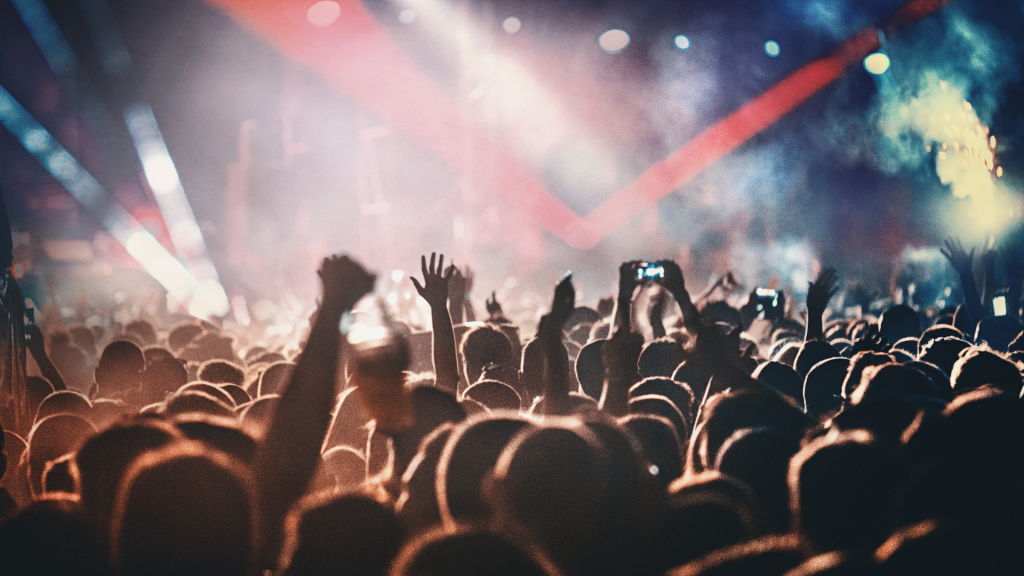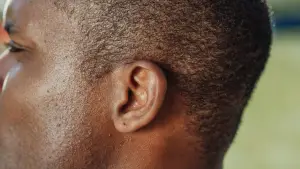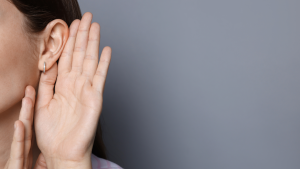Whether you’re rocking out on stage or soaking in the energy of a live show, music is one of life’s most powerful and immersive experiences. But with that power comes risk—especially when it comes to your hearing. Musicians and concert fans alike are often exposed to dangerously high sound levels, and over time, this exposure can lead to noise-induced hearing loss (NIHL), tinnitus, or other permanent auditory issues.
Despite how common it is, hearing damage from loud music is often underestimated or ignored—until it’s too late. The good news? You don’t have to choose between your love for music and your long-term hearing health. With the right knowledge and tools, you can protect your ears without sacrificing the sound quality you love.
In this guide, we’ll explore how sound exposure affects your hearing, the differences in risk between musicians and fans, and the most effective types of hearing protection. Whether you’re playing guitar in a local band, mixing sound at gigs, or just love being in the crowd, this article will give you the insights and actionable tips you need to protect your most valuable instrument—your hearing.
Understanding Noise-Induced Hearing Loss (NIHL)
Noise-induced hearing loss (NIHL) is a permanent condition caused by exposure to loud sounds that damage the delicate structures within the inner ear—specifically, the tiny hair cells in the cochlea that convert sound vibrations into electrical signals for the brain. Once these cells are damaged or destroyed, they do not regenerate, resulting in partial or complete hearing loss.
The danger lies in the intensity and duration of sound exposure. Sound is measured in decibels (dB), and prolonged exposure to levels above 85 dB can begin to damage hearing. To put this in perspective:
- A typical conversation: ~60 dB
- A rock concert: 100–110 dB
- Amplified instruments or front-row speakers: 120+ dB
At 100 dB, hearing damage can begin in as little as 15 minutes. At 110–120 dB, damage can occur in just 1 to 2 minutes. Since many concerts and music performances last several hours, the risk becomes clear.
But NIHL isn’t always immediately noticeable. Early signs may include:
- Ringing in the ears after a concert (tinnitus)
- Difficulty hearing conversations in noisy environments
- A sense that sounds are muffled or distorted
Over time, this damage can accumulate silently. Musicians and regular concert-goers may dismiss these symptoms as temporary or “part of the experience,” but repeated exposure without protection significantly increases the risk of permanent damage.
Fortunately, NIHL is 100% preventable. Understanding what causes it is the first step toward protecting yourself. With the right hearing protection, you can continue to enjoy the music you love while safeguarding your ears for years to come.
Hearing Risks for Musicians vs. Concert-Goers
Both musicians and concert-goers are vulnerable to hearing damage, but the nature and extent of their risks differ. Understanding these distinctions can help each group take the right steps toward prevention.
Musicians: Prolonged, Repeated Exposure
Musicians—especially those in bands, orchestras, or who perform live regularly—face long-term exposure to high sound levels. Whether it’s daily rehearsals, recording sessions, or nightly gigs, they are often surrounded by loud instruments, amplifiers, and stage monitors.
Certain instruments carry greater risk. Drummers, brass players, and electric guitarists are frequently exposed to decibel levels well above safe limits. Sound engineers and DJs are also at risk due to their proximity to large sound systems and prolonged exposure in venues.
The risk for musicians is cumulative. Even if the volume doesn’t seem extreme in a single session, repeated exposure over weeks, months, or years can quietly erode hearing. Many professionals only notice the damage after it’s already significant—often as tinnitus or high-frequency hearing loss that affects their ability to perform or enjoy music.
Concert-Goers: High Intensity, Short Duration
While fans may not face the same frequency of exposure, the intensity of sound at concerts can be just as harmful—especially when standing near speakers or in front-row positions. The impulse to “feel the music” often means fans expose themselves to sound levels upwards of 110 dB for several hours at a time.
Some concert-goers attend shows weekly or even more often, and without proper protection, this can lead to hearing fatigue or permanent damage. Unlike musicians, who might be more aware of hearing health risks, fans are less likely to wear ear protection—assuming it’s unnecessary or fearing it will reduce sound quality.
Shared Risk: Tinnitus and Long-Term Damage
Both groups are susceptible to tinnitus, often described as ringing, buzzing, or hissing in the ears. This can become chronic and debilitating, affecting sleep, concentration, and quality of life. Once present, it can be difficult to manage and has no known cure—making prevention critical.
Ultimately, whether you’re on stage or in the crowd, the risk is real. Fortunately, the solutions are accessible. By adopting the right habits and tools, musicians and fans can continue enjoying live music without compromising their hearing health.
Types of Hearing Protection and How They Work
Protecting your hearing doesn’t mean sacrificing the quality of your musical experience. In fact, modern hearing protection options are designed specifically to reduce volume without distorting sound—making them ideal for both musicians and music lovers.
1. Foam Earplugs (Disposable)
These are the most accessible and inexpensive option. Foam earplugs are made of soft, expandable material that fits snugly in the ear canal and can reduce sound by 20–30 dB, depending on fit.
- Pros: Affordable, widely available, simple to use
- Cons: Can muffle sound and reduce clarity; not ideal for musicians or high-fidelity listening
- Best for: Occasional concert-goers or as a backup option
2. High-Fidelity (Musician’s) Earplugs
These earplugs are specially designed to preserve the quality of sound while reducing volume evenly across frequencies. Unlike foam plugs, they don’t muffle music—just make it safer to listen to.
- Pros: Excellent sound clarity; reusable; often come in multiple sizes
- Cons: More expensive than disposables; may take time to get used to
- Best for: Musicians, frequent concert-goers, sound engineers
Brands like Etymotic, Earasers, and Loop Earplugs are popular for their balance of protection and sound fidelity.
3. Custom-Molded Earplugs
These are made specifically for your ears using molds taken by a hearing care professional. Custom earplugs can be fitted with interchangeable filters to adjust the level of sound reduction based on your needs.
- Pros: Best fit and comfort; long-lasting; tailored protection
- Cons: Higher upfront cost; require professional fitting
- Best for: Professional musicians, DJs, audio technicians
4. In-Ear Monitors (IEMs)
IEMs are often used by performing musicians. They not only provide hearing protection but also allow the user to hear a personalized mix of instruments or vocals directly in their ears—eliminating the need for loud stage monitors.
- Pros: Superior sound control; customizable mix; excellent isolation
- Cons: Expensive; requires technical setup and monitoring
- Best for: Touring musicians, stage performers, and serious audio professionals
5. Over-the-Ear Protection (Earmuffs)
While less commonly used at concerts, earmuffs provide substantial noise reduction and are often used in rehearsal or studio settings where isolation is important.
- Pros: Easy to wear; great for short-term, high-volume exposure
- Cons: Bulky; not suitable for every musical environment
- Best for: Drummers, sound crew, rehearsal environments
Choosing the right protection depends on how often you’re exposed to loud music, your role (performer or attendee), and your sound quality preferences. Regardless of the option, the key is consistent use—making protection part of your regular musical routine.
Tips for Protecting Your Hearing Without Sacrificing Sound Quality
One of the biggest concerns about using hearing protection is that it will dull or distort the music. But with the right approach, you can enjoy full, rich sound while keeping your ears safe. Here are practical tips to help musicians and concert-goers strike that perfect balance:
1. Choose High-Fidelity Earplugs
As mentioned earlier, musician’s earplugs are designed to lower volume evenly across all frequencies, which means the music retains its natural tone and balance—just at a safer level. Brands like Etymotic, Alpine, and Loop offer models tailored for live sound environments.
2. Get the Right Fit
Proper fit is crucial. Earplugs that are too loose or inserted incorrectly won’t protect your ears effectively and may distort sound. Custom-molded earplugs provide the best fit and comfort, especially for regular performers or concert enthusiasts.
3. Take Listening Breaks
Give your ears time to recover. At concerts or gigs, take short breaks away from the loudest areas—like stepping outside or moving to a quieter zone. Even 5–10 minutes of silence can help your auditory system recalibrate and reduce stress on the ears.
4. Position Yourself Wisely
If you’re in the audience, try not to stand directly in front of or next to speakers. The closer you are to sound sources, the higher the decibel exposure. Opt for spots that still have great sound but aren’t blasting directly into your ears.
5. Monitor Your Volume Levels
For musicians and sound engineers, using a decibel meter app can be eye-opening. Keeping sound levels below 85 dB when possible is ideal, especially during rehearsals or extended performances. In-ear monitors can help control exposure by allowing performers to hear clearly at lower volumes.
6. Use Dual Protection When Needed
In very loud environments (e.g., large arenas or behind drum kits), consider using both in-ear monitors or plugs and over-the-ear protection. This “dual protection” can be particularly useful during soundchecks or high-volume sets.
7. Don’t Ignore Warning Signs
If you experience ringing, sensitivity, or muffled hearing after a show, take it seriously. These are signs your ears are overstressed. Rest them, avoid further exposure for a while, and consult an audiologist if symptoms persist.
8. Make It a Habit
The best protection is the one you use consistently. Keep earplugs in your instrument case, gig bag, or keychain. Normalize their use—not only for yourself but for those around you.
By integrating these habits into your routine, you can maintain both your hearing health and sound enjoyment—ensuring your relationship with music is one that lasts a lifetime.
Making Hearing Protection a Habit: Cultural Shifts and Advocacy
For many years, hearing protection was an afterthought in the music world—something associated with technical crews or industrial settings, not rock stars or passionate fans. But that mindset is changing. A growing number of musicians, audiologists, and organizations are working to normalize ear protection and encourage a culture of hearing health in the music community.
Musicians Leading the Charge
Some of the world’s most famous performers have gone public about their hearing struggles. Artists like Eric Clapton, Chris Martin (Coldplay), and Pete Townshend (The Who) have spoken openly about their battles with tinnitus and hearing loss, warning others not to make the same mistake of ignoring protection.
These testimonials are powerful. They help reduce stigma and show that even the most seasoned professionals aren’t immune to hearing damage—and that taking precautions is a sign of professionalism, not weakness.
Venue and Industry Support
Venues are also beginning to take action. Some now offer free or low-cost earplugs at entrances or merchandise booths. Music festivals and promoters are collaborating with hearing health organizations to educate attendees and provide on-site protection.
Sound engineers and tour managers are also advocating for safer sound checks, balanced mixes, and volume-conscious setups that still deliver energy without excessive decibel levels.
Raising Awareness
Campaigns like “Love Your Ears”, “Make Listening Safe” (by WHO), and Hearing Education and Awareness for Rockers (H.E.A.R.) are spreading awareness about NIHL and empowering listeners to protect themselves. These groups also provide resources, hearing screenings, and promote legislation that supports better noise standards in entertainment venues.
Changing the Narrative
Most importantly, the narrative is shifting. Wearing earplugs is becoming a mark of experience and self-care, not something to be embarrassed about. Like wearing sunscreen at the beach or a helmet while biking, hearing protection is increasingly seen as smart, responsible, and essential for anyone who loves music.
By embracing this shift—whether as a performer, promoter, or fan—you become part of a movement that values sustainable music enjoyment. Hearing loss is irreversible, but with a little education and the right habits, it’s also largely preventable.
Conclusion
Whether you’re performing on stage or dancing in the crowd, music is meant to be enjoyed—not endured at the expense of your hearing. The vibrant energy, emotional depth, and connection that music brings are irreplaceable—but so is your ability to hear it clearly for years to come.
As this guide has shown, hearing protection doesn’t have to mean muffled sound or missed moments. Thanks to advancements in technology and growing awareness within the music community, there are now more options than ever for preserving sound quality while reducing the risk of long-term damage.
Musicians are learning that protecting their hearing is an investment in their craft. Fans are realizing that one night of loud music isn’t worth a lifetime of ringing ears. And together, this cultural shift is making hearing protection a natural part of the live music experience.
By making a few smart choices—choosing high-fidelity earplugs, positioning yourself safely, taking breaks, and normalizing protection—you can ensure that your love for music doesn’t come at a cost. Because in the end, your hearing is your most important instrument. Take care of it, and it will serve you for a lifetime.
FAQ
Why is hearing protection important at concerts?
Concerts often reach sound levels above 100 decibels, which can cause hearing damage in just a few minutes. Without protection, both musicians and fans are at risk of noise-induced hearing loss or tinnitus. Using earplugs helps reduce volume while preserving the music’s clarity.
Do earplugs ruin the music experience?
Not at all—especially when you use high-fidelity or musician’s earplugs. These are designed to reduce volume evenly across frequencies, so you still hear all the detail and dynamics of the music, just at a safer level.
What’s the best hearing protection for musicians?
Custom-molded earplugs or in-ear monitors offer the best protection and sound quality for musicians. They provide a personalized fit and allow for better sound control during performances, rehearsals, and recordings.
Can hearing damage from concerts be reversed?
Unfortunately, noise-induced hearing loss is usually permanent. That’s why prevention is so important. However, some temporary symptoms like muffled hearing or ringing may subside with rest and protection from further exposure.
How can I encourage others to use hearing protection?
Lead by example and talk about the benefits. Share stories or information about hearing health, offer extra earplugs to friends, and support venues and artists who promote safe listening practices.
“This article is for informational purposes only and is not a substitute for professional medical advice, diagnosis, or treatment. If you are concerned about your hearing or ear health, please consult a qualified healthcare provider.”






